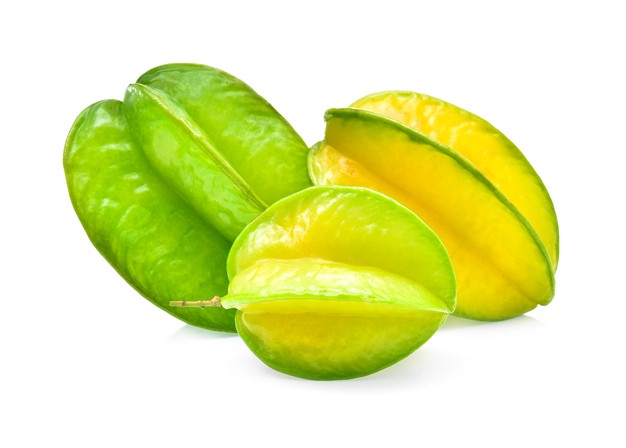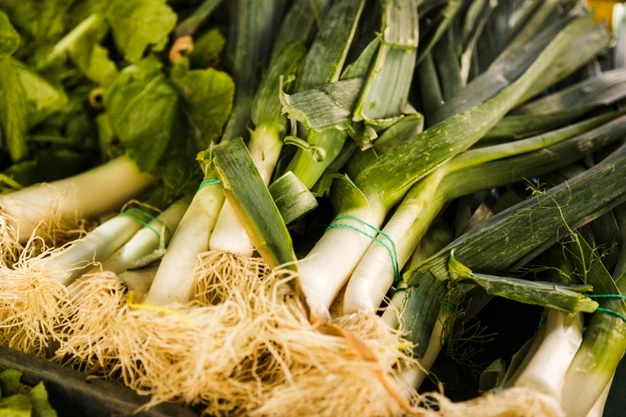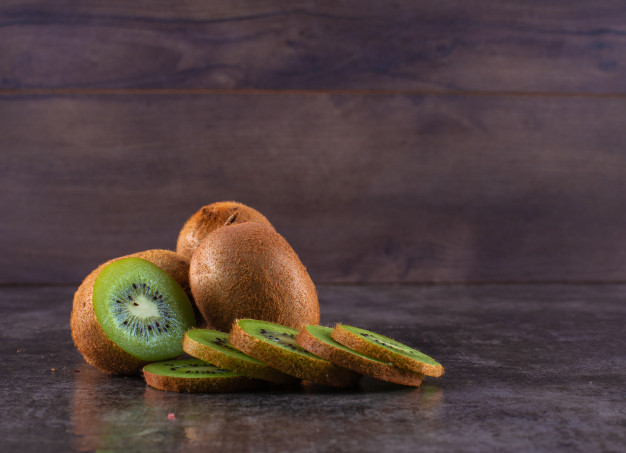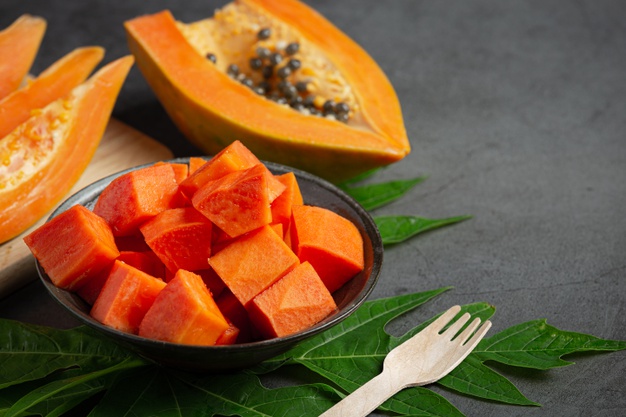Star fruit, also known as carambola is a nutritious fruit mainly enriched in Vitamin C, antioxidant and fibres. It is native to Southeast Asia and it is extremely popular for its countless health benefits. It is oval in shape and has five ridges and these ridges give the fruit an appearance of star when viewed cross-sectionally, thus the fruit is called star fruit. It is yellow or green in colour and has a sour flavor. It has been traditionally used for various medicinal and culinary purposes.
Nutritional composition
- It is considered as low sugar fruit this is because it contains lesser amount of carbohydrates and free sugar. It has estimated that 100g of star fruit contains about 6g of carbohydrate and about 3 to 4 g of sugar
- Whereas it contains desirable amount of fibre
- It contains too some extent of protein as well
- It contains negligible amount of fat
- It is considered as low calorie food as well due to its poor carbohydrate and fat contents
- It is rich in moisture
- It is packed with several micronutrients, which ultimately make the fruit healthier such as Vitamin C, Vitamin A, Vitamin B2, B5, B9, magnesium, sodium, potassium and copper
- It contains various important and healthy plant compounds like gallic acid, epicatechin and quercetin that play important role in exhibiting antioxidant, anti-inflammatory and antimicrobial activity

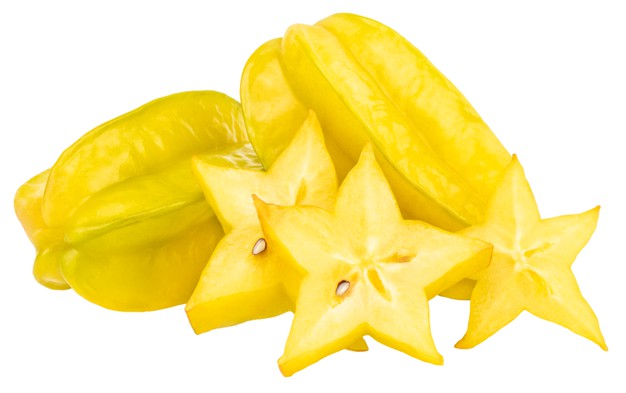
Biological activity
Antioxidant activity
- Its phytonutrients as well as micronutrient components act as potent antioxidant and help to protect the body from free radical induced oxidative damages
- It also helps to prevent the oxidation of various important biological substances of the body thus helps to sustain their functionality and promotes well being
Anti-inflammatory activity
- Its flavonoid components especially epicatechin, quercetin and gallic acid play imperative role in preventing inflammation
- Its Vitamin C content also exerts anti-inflammatory activity and significantly reduces joint swelling
Antimicrobial activity
- It is loaded with phytonutrients such as saponins, flavonoids, alkaloids etc that exhibit strong inhibitory effects on microorganism
- It helps to hinder the growth and replication of microbial cells in host thus decreases the prevalence of infectious diseases
- It is extremely effective against fungus and bacteria (both gram positive and gram negative)
Health benefits
Role on digestive health
- Consumption of the peel as well as the flesh of the fruit is associated with providing adequate amount of soluble and insoluble fibre, which play imperative role in maintaining healthy digestive system
- It helps to improve nutrient absorption thus improves nutrients bioavailability
- It helps to enhance bowel movement, which ultimately helps to improve regularity. All the credit goes to its fibre content. Fibre present in star fruit helps to increase the bulkiness of stool and also makes the stool soft by enhancing water retention as a result it helps in easy defecation
- It also helps to improve gut health by promoting the growth of intestinal flora
- Leaf decoction of star fruit has been traditionally used for protecting the gastrointestinal tract from inflammatory damages

Role on metabolism
- Proper metabolism is recognized as an essential feature for survival because faulty metabolism is responsible for increasing the risk of developing various life threatening diseases
- Consumption of star fruit is very much beneficial for boosting up the overall metabolism of body. It contains various important nutrients that take part in metabolic reactions and also promote cellular respiration
Role on hydration
- It is considered as one of the most hydrating fruits thus its consumption is very much beneficial for hydrating the body
- It is better to consume the fruit during hot and humid weather as it helps to reduce the prevalence of dehydration
Better for skin and hair
- Its antioxidant activity and vitamin components help in promoting skin health
- It helps to prevent ageing too
- Its quercetin and gallic acid component also exert potent anti-inflammatory as well as antihistamine properties that play vital role in protecting the skin from damages
- It helps to provide the skin a younger look
- It also helps to improve skin elasticity
- It helps to prevent blemishes as well as wrinkles
- It also helps to improve hair growth and increases hair shine too
- It helps to prevent hair loss as well

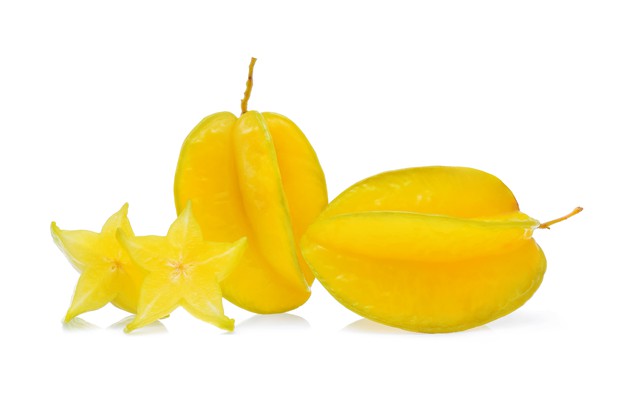
Therapeutic uses
- It is known as a cardio friendly fruit as it contains numerous cardio protective nutrients. It is extensively used for preventing cardiac disorders. It helps to decrease the prevalence of atherosclerosis by preventing fat deposition within blood vessels. Its potassium content plays vital role in preventing hypertension. Its magnesium content helps to maintain heart beat as well. Its consumption significantly decreases the prevalence of strokes or heart attack
- Being a low glycemic fruit it can be easily included in the diet of diabetic patients as it does not increase glucose load after its consumption. Whereas, its fibre content also plays vital role in decreasing blood sugar concentration by reducing the rate of glucose absorption from intestinal epithelial cells
- Its consumption is also related with decreasing blood cholesterol and triglyceride concentration thus it is widely used as an effective therapeutic agent for preventing the consequences of hyperlipidemia
- It is related with reducing the prevalence of gall stone formation and non alcoholic fatty liver disease
- Its low calorie content and high fibre content makes it an effective therapeutic substance for facilitating weight reduction. It also helps to prevent visceral obesity
- Magnesium is considered as sleep promoting trace element and as the star fruit is rich in magnesium thus its consumption is believed to be very effective for preventing insomnia. Magnesium is related with maintaining the level of gamma amino butyric acid (an inhibitory neurotransmitter) that helps to promote healthy sleeping whereas it also exerts a feeling of relaxation and calmness that also induce sleeping
- Its iron and folic acid contents are associated with synthesizing hemoglobin and help in RBC maturation thus it is better to consume star fruit for reducing the prevalence of anemia

Traditional uses
It has been traditionally used in folk medicine for various purposes, which include –
- Its anti-inflammatory property makes it an effective agent for treating chronic inflammatory diseases
- It is used for preventing pain or swelling or headache as it exerts analgesic effect too
- It is also used as hypotensive agent and extensively used for treating hypertension
- It is used for preventing colic infections too
- It is also used for treating parasitic infestation as it has anthelmintic property
- It is also used as diuretic substance
- It is used as an effective cough suppressant and widely used for treating various respiratory disorders as well
- It is also used as a preventive measure for digestive disorders

Culinary uses
- It can be eaten raw
- It can also be used for preparing jam or pickle
- It can be cooked with sea foods
- It can be consumed as beverage or can simply consumed as juice
- It can be used as a garnish also
- It can be added to salads as well
Risk factors
- It has various health benefits thus it can be a part of healthy diet but it may often develops allergic reactions
- Individual suffer from renal disorders should avoid its consumption. It has seen that star fruit contains some neurotoxins and individual with renal complications feel difficult to filter these toxins from body and develops various health hazards
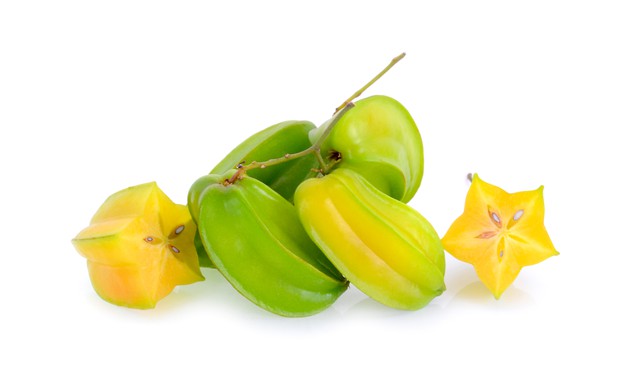
Source:
Fang, H.C., Lee, P.T., Lu, P.J., Chen, C.L., Chang, T.Y., Hsu, C.Y., Chung, H.M. and Chou, K.J., 2008. Mechanisms of star fruit-induced acute renal failure. Food and chemical toxicology, 46(5), pp.1744-1752.
Lakmal, K., Yasawardene, P., Jayarajah, U. and Seneviratne, S.L., 2021. Nutritional and medicinal properties of Star fruit (Averrhoa carambola): A review. Food Science & Nutrition, 9(3), pp.1810-1823.
Leelarungrayub, J., Laskin, J.J., Bloomer, R.J. and Pinkaew, D., 2016. Consumption of star fruit juice on pro-inflammatory markers and walking distance in the community dwelling elderly. Archives of gerontology and geriatrics, 64, pp.6-12.
Leelarungrayub, J., Yankai, A., Pinkaew, D., Puntumetakul, R., Laskin, J.J. and Bloomer, R.J., 2016. A preliminary study on the effects of star fruit consumption on antioxidant and lipid status in elderly Thai individuals. Clinical interventions in aging, 11, p.1183.
Saghir, S.A.M., Sadikun, A., Kooi-Yeong, K.H.A.W. and Murugaiyah, V., 2013. Star fruit (Averrhoa carambola L.): From traditional uses to pharmacological activities. Boletín Latinoamericano y del Caribe de Plantas Medicinales y Aromáticas, 12(3), pp.209-219.
Shui, G. and Leong, L.P., 2006. Residue from star fruit as valuable source for functional food ingredients and antioxidant nutraceuticals. Food chemistry, 97(2), pp.277-284.
